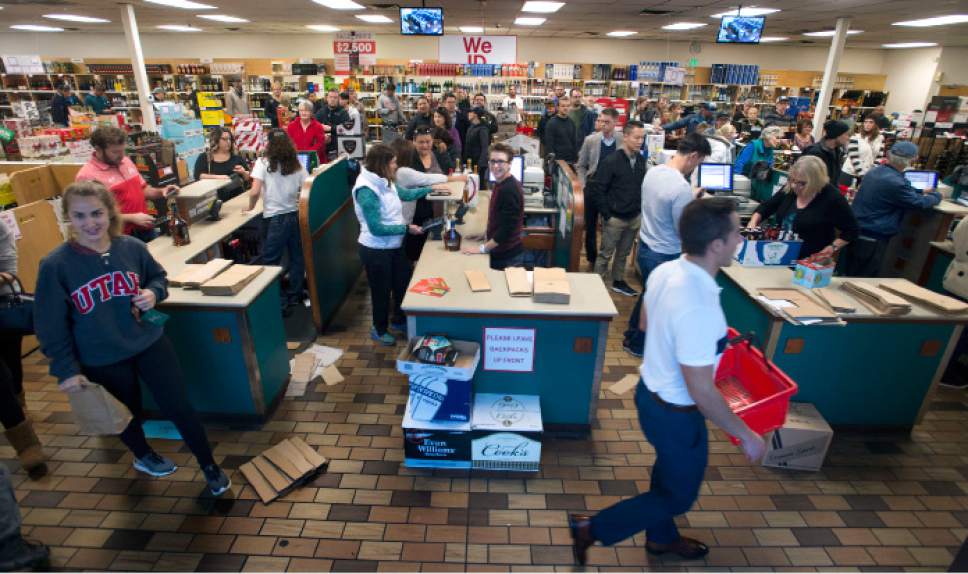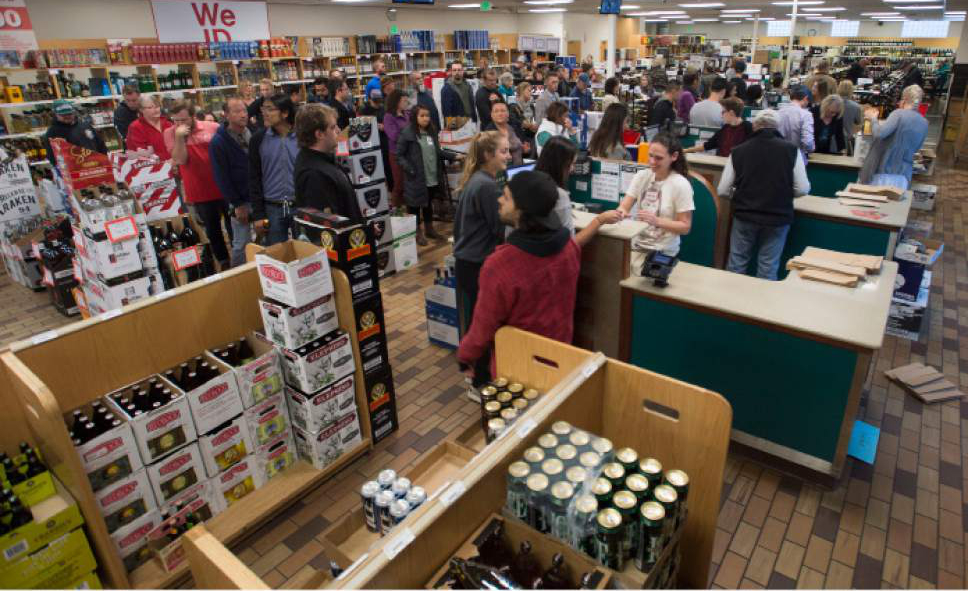This is an archived article that was published on sltrib.com in 2016, and information in the article may be outdated. It is provided only for personal research purposes and may not be reprinted.
With every major holiday, Utah liquor sales continue to reach new heights.
On the Friday before Christmas, for example, Utah had its highest sales day ever, reaching $3.7 million, "a record by $400,000," said Cade Meier, deputy director of the Utah Department of Alcoholic Beverage Control (DABC).
That single-day sales figure toppled a record set just a month ago, on the Wednesday before Thanksgiving, when $3.3 million of wine, heavy beer and spirits were purchased.
The numbers could be equally impressive this week as another three-day weekend — this time, New Year's — approaches. State liquor stores will be open regular hours on Friday, Dec. 30, but all stores will close at 7 p.m. on Saturday, Dec. 31, and remain shuttered through Monday, Jan 2, when most employers observe the holiday.
There are several reasons why liquor sales are booming in Utah, but the state's changing demographics may be the most prominent. Starting in the 1990s and continuing through 2008, there was an influx of new residents to Utah — including many non-Mormons who are more likely to consume alcohol.
There also has been an increase in Utah-produced beer and liquor, as well as a flourishing tourism and hospitality industry. On Tuesday, the DABC liquor commission approved manufacturing licenses for two new Utah breweries and one distillery, bringing the state total to 31 breweries and 19 distilleries.
In 2013, Utah had just 18 breweries and three distilleries.
Liquor sales are likely to continue to grow, according to numbers in the DABC's 2016 annual report released Tuesday.
Between July 1, 2015, and June 30, 2016, liquor sales at Utah's 44 state-owned stores brought in a record $405.9 million, excluding sales taxes. That's a 7.8 percent jump from 2015, when annual sales were $376.2 million.
More than 16 percent of the total, or $65.5 million, is wine, beer and spirits purchased by Utah restaurants and bars for on-premise consumption.
The DABC keeps about $46.6 million, or about 11 percent of the revenues, to cover operating costs, such as liquor storage and delivery as well as salaries, wages and benefits for the 220 full-time and 315 part-time employees.
Under Utah law, however, the rest must be returned to the state. To meet that legal obligation, the DABC transfered $104.03 million to the general fund; $40.64 million to Utah's school lunch program; more than $4 million to the State Bureau of Investigation for liquor law enforcement efforts; and $2.19 million to an education program that works to prevent underage drinking, according to the report.
The DABC also collected $21.74 million in sales taxes, which are distributed to cities and counties.
In a letter to employees that was included in the annual report, commission Chairman John T. Nielsen said he believed "that the department is significantly underfunded" and promised that the commission would "do all we are able to improve funding."
Top 5 liquor stores by sales volume
1. Salt Lake Club Store (for restaurants and bars) ($23.5 million, up 12.44 percent from 2015)
2. Cottonwood Heights ($19.2 million, up 11 percent)
3. Sandy ($18.1 million, up 4.8 percent)
4. Sugar House ($15 million, up 6.7 percent)
5. Snow Creek in Park City ($14.7 million, up 5.9 percent)
Top-selling brands by category
Spirits • Barton Vodka ($2.8 million in sales)
Wine • Kendall Jackson Vintner's Reserve Chardonnay ($927,149)
Heavy Beer • Squatters Hop Rising Double IPA ($1.66 million)
Source: DABC 2016 Annual Report







